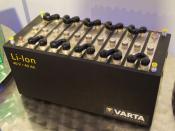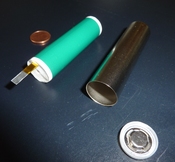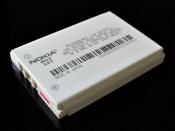How are car batteries made and how do they work? Include chemical reactions that are involved in the process.
A battery is a device for storing chemical energy and converting that chemical energy into electricity. A car battery is a type of rechargeable battery that supplies electric energy to an automobile. Usually this refers to an SLI battery (starting, lighting, and ignition) to power the starter motor, the lights, and the ignition system of a vehicleÃÂs engine. This also may describe a traction battery used for the main power source of an electric vehicle.
A battery stores energy in chemical form that can be released on demand as electricity. This electrical power is used by the cars ignition system for cranking the engine. A battery is made up of one or more electrochemical cells, each of which consists of two half-cells or electrodes. One half-cell, called the negative electrode, has an overabundance of the tiny, negatively charged subatomic particles called electrons.
The other, called the positive electrode, has a deficit of electrons. When the two halves are connected by a wire or an electrical cable, electrons will flow from the negative electrode to the positive electrode. We call this flow of electrons electricityAutomobile manufacturers have identified three types of rechargeable battery as suitable for car use. Those types are lead-acid batteries, nickel metal hydride (NiMH) batteries, and lithium-ion (Li-ion) batteries.
Lead-acid batteries were invented in 1859 and are the oldest form of rechargeable battery still in use. They are fabricated from plates of lead and separate plates of lead oxide, which are submerged into an electrolyte solution of about 35% sulfuric acid and 65% water. This produces a chemical reaction that releases electrons, allowing them to flow through conductors to produce electricity. As the battery discharges, the acid of the...


